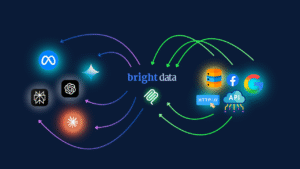When you’re building an application, one thing you can’t skip is API testing. Whether it’s a login flow, payment gateway, or a complex e-commerce workflow, ensuring your APIs behave correctly saves you from nasty surprises in production.
I had already explored EchoAPI earlier, but while working on my recent project, I revisited it. And guess what? They’ve supercharged it with AI-powered features.
This update caught my attention immediately:
- ✅ One-click Docs
- ✅ Fake data generator
- ✅ Bulk parameter updates
- ✅ AI Convert
- ✅ AI Test-case generator
- ✅ AI-powered script & assertion generator
In this blog, I’ll take you through my full experience, step by step, so you’ll know exactly how these features can save you hours of manual testing.
Installing and Setting Up EchoAPI
Before we dive into the AI features, let’s start with the basics.
I downloaded and installed EchoAPI’s desktop app. The interface is clean and very intuitive, something between Postman and Insomnia, but with its own unique AI touch.
For this demo, I connected my FastAPI e-commerce backend. This app has typical endpoints like:
POST /signupPOST /loginGET/cartPOST /cart/addPOST /order/placePOST /paymentGET/productsGET/products/{product_id}
Perfect playground to test EchoAPI’s AI magic.
AI-Generated Test Cases
Let’s start with the AI Test-case Generator.
Normally, writing test cases for each endpoint is a tedious process:
- You have to decide scenarios.
- Write expected outcomes.
- Prepare data for each run.
- And then execute them manually.
But EchoAPI just makes it one-click.
Step 1: Pick an Endpoint
Inside EchoAPI, I selected an endpoint from my FastAPI project. Let’s say the signup endpoint.

Step 2: Go to the Cases Section
Here, EchoAPI shows 8 standard testing dimensions (like API Specification Compliance Tests, Invalid Input Handling Tests, HTTP Method Validation, etc.). I kept all of them selected.

Step 3: Generate
I clicked Generate, and instantly, the AI created:

Step 4: Apply & Run
When I clicked Apply and Test, EchoAPI ran 13 cases with 35 different sets of data.

That’s a massive workload handled automatically. Imagine writing these manually; it could easily take a couple of hours per endpoint.

And here’s the best part: if something fails, EchoAPI shows why it exactly failed, with every detail in the response section.

Tip: You can re-run failed cases separately to debug faster.
AI-Powered Scripts & Assertions
Sometimes you need more than automated test cases; you want custom scripts and validation rules. EchoAPI covers that too.
AI Script Generator
Let’s say you want a test script for checking a complex payment flow. Instead of writing it yourself, you just ask the AI:
I typed “Generate a script to test a payment API with both valid and invalid card details.”
EchoAPI writes it out, and the script is ready to run.

You can edit these AI-generated scripts or chain them with your own logic if needed.
AI Assertions
Assertions are what validate your API’s response. Doing this manually is slow, especially when responses are large.
Example:
- You send a request.
- You get a JSON response like the following:
|
1 |
{ "status": "success", "order_id": "12345" } |
Now, instead of manually writing like this:
|
1 2 |
assert response.status == "success" assert "order_id" in response |
You just click AI Assert in the response section, and EchoAPI generates these checks for you.

Even better, you can add or modify assertions in plain English:
“Assert that the response returns status 201 and user_id should not be empty.”
And it updates your tests. This makes it super friendly even for non-coders who just want to validate business logic.
Chaining Multiple APIs
Real-world apps rarely run on a single endpoint. You usually need a workflow: signup → login → add-to-cart → place-order → make-payment.
EchoAPI lets you chain APIs together so you can test them all in one flow.
Here’s how I did it:
Step 1: Create Folder & Subfolder
First, go to the “Tests” section. Here, I created a folder in EchoAPI for my test flows, then a subfolder for this specific checkout flow.

Step 2: Add Endpoints by Reference
I selected my endpoints into this folder by reference (not by copy). This way, if my endpoint changes, it stays automatically synchronized here.
Step 3: Configure Each Endpoint
- Signup Endpoint: Entered new user data and saved.
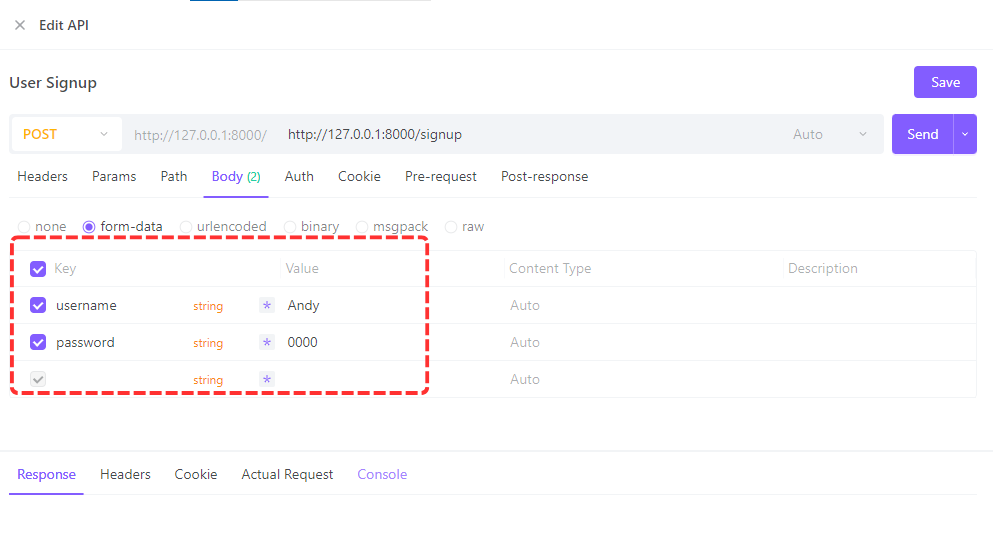
- Login Endpoint: Used the same credentials. This gives me
access_token.
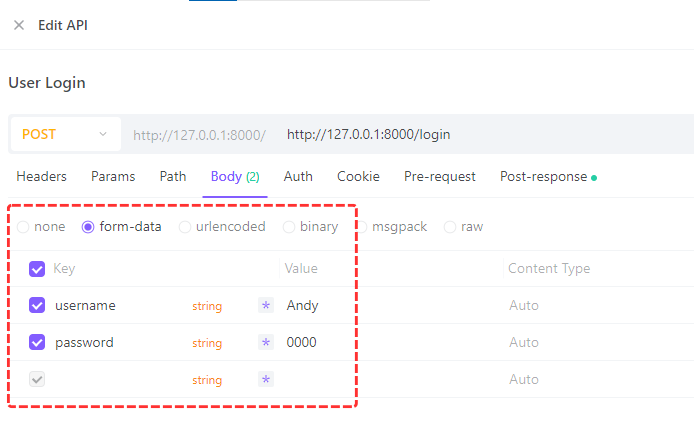
- Captured the access token from the response and stored it as a variable using JSONPath expression in the Post-response section.
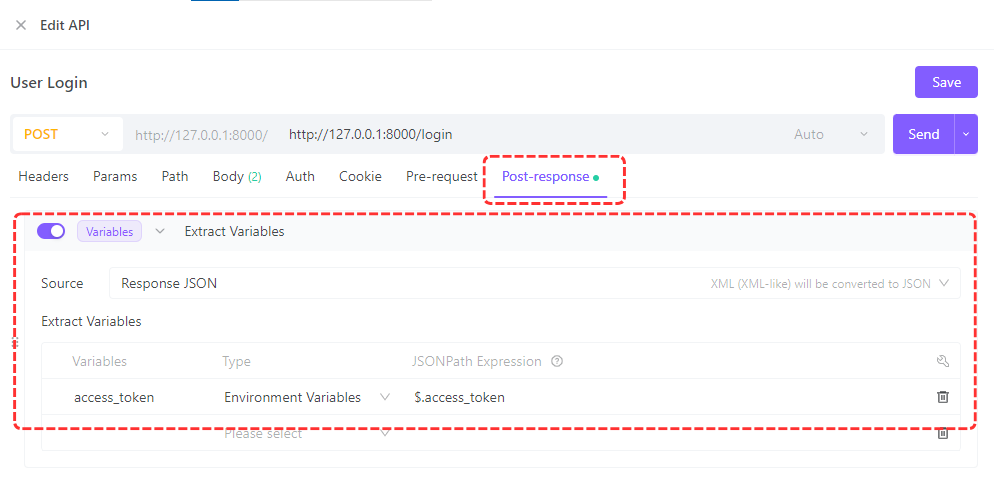
- Add-to-Cart Endpoint: Added a product. Passed the access token in the
Authheader.
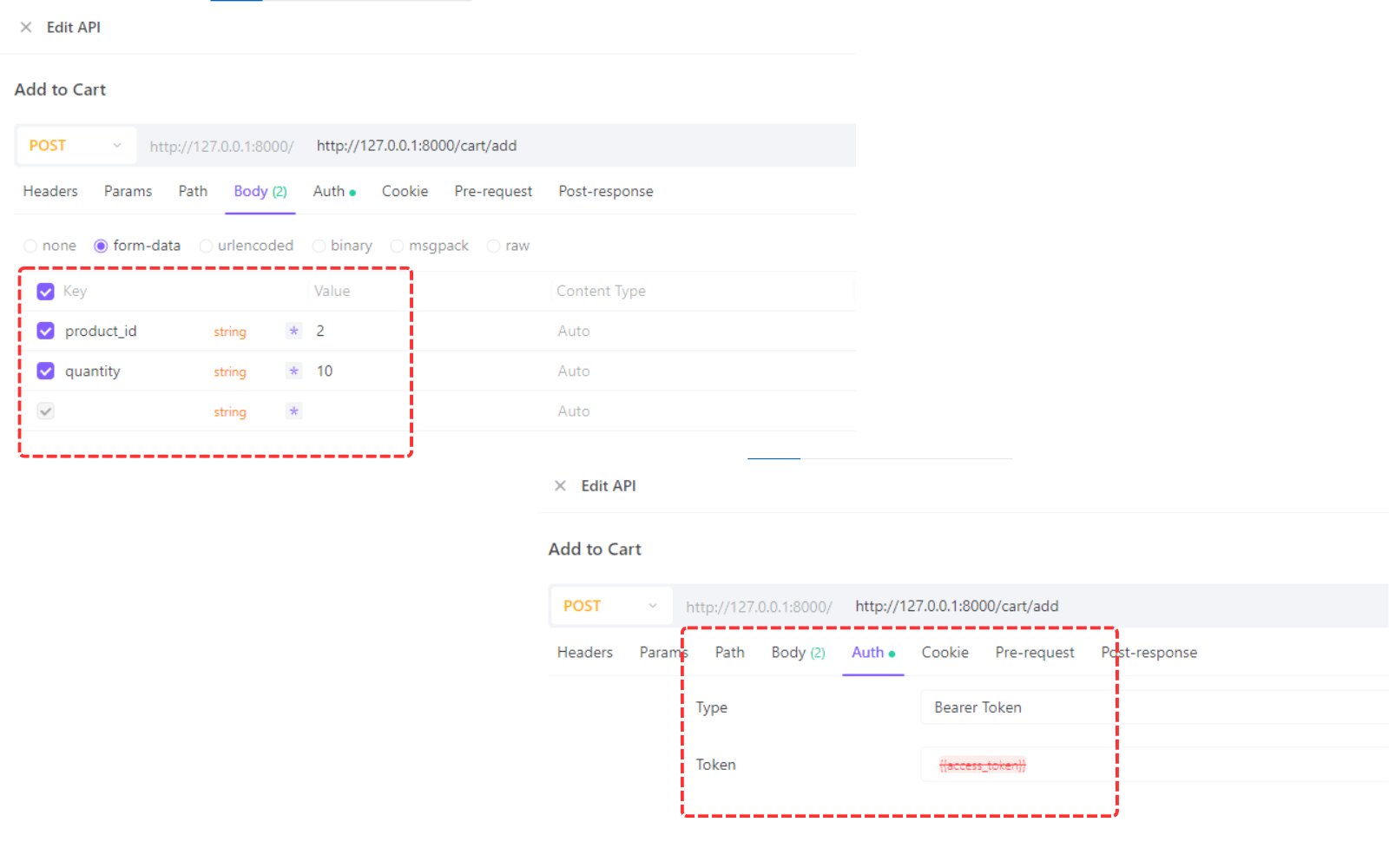
- Place-Order Endpoint: Placed the order. Passed the access token in the
Authheader. Captured the order ID and stored it as a variable in the Post-response section.
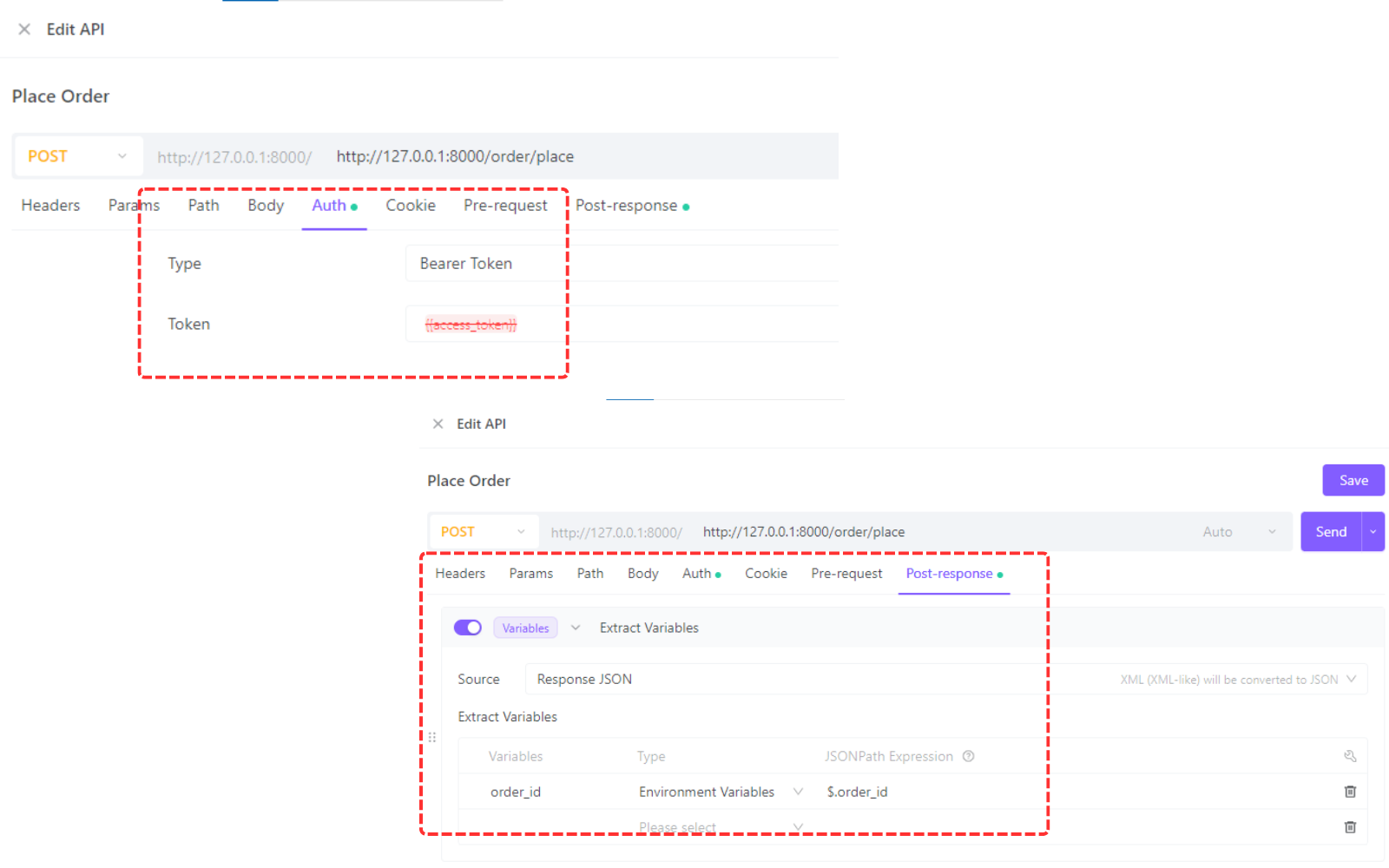
- Make-Payment Endpoint: Used the captured order ID and passed the access token in
Authheader to complete the payment.
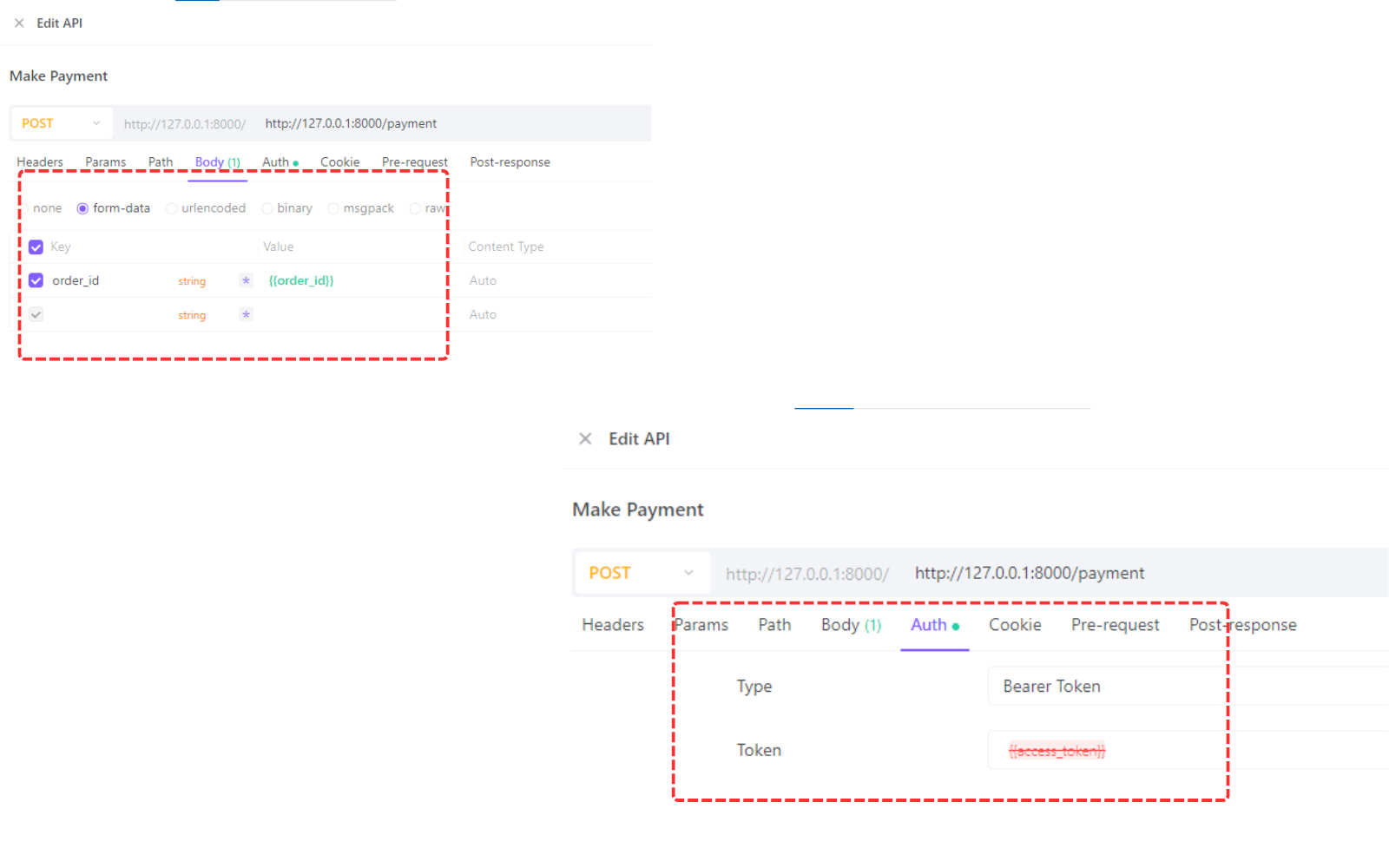
Step 4: Run the Flow
After selecting the preferred environment, I saved all the settings and ran the entire chain.

Result? EchoAPI executed the flow step by step, showing me where things passed or failed.

This is a game-changer; instead of manually juggling values between requests, everything flows automatically.
EchoAPI vs Postman & Thunder Client: AI Features Comparison
When it comes to developer tools, positioning matters, not just what features you have, but how they stand out and why someone should choose your solution over existing ones. Let’s break down how EchoAPI compares with Postman and Thunder Client.
Postman: AI Features & Strengths
Postman has long been the industry leader for API testing and collaboration, and over time, they’ve been adding AI capabilities. Some highlights include:
- Postbot (AI Assistant): Helps debug APIs, write tests, and analyze large responses or datasets with ease.
- AI Agent Builder: Lets you build agent-like workflows by combining AI models with APIs. You can design drag-and-drop visual workflows, use templates, and even tap into Postman’s growing network of APIs and MCP servers.
- Flows, MCP & AI Developer Tools: Postman supports experiments with AI models, evaluating multiple LLMs, generating prompts, and building test suites.
- Autocomplete, Suggestions & Docs Assistance: Useful for writing tests, analyzing large responses, and keeping documentation in sync.
Limitations:
- Test-case generation isn’t fully automatic: Postbot can help, but often requires manual tweaking.
- Workflows like chaining APIs, extracting variables, or setting up environments still require a lot of manual setup.
- Postman’s depth comes with complexity, meaning a steeper learning curve and heavier overhead for new users.
Thunder Client: AI Features & Strengths
Thunder Client takes a different approach: lightweight API testing inside VS Code. Its philosophy is simplicity and speed.
- Scriptless Testing & GUI Assertions: Instead of writing code, you can define tests via dropdowns and GUI selectors (e.g., status codes, response fields).
- Core Features: Collections, environments, request history, and local storage — all the basics you need for quick API testing.
- AI Integration (Early Stages): Thunder Client has announced AI-generated tests as “coming soon”, meaning their AI feature set is still developing.
- CI/CD & Git Sync: Useful for teams to collaborate, share collections, and integrate tests into workflows.
Limitations:
- AI support is limited and still maturing.
- Not ideal for complex workflows like chained requests or dynamic variable management.
- Lacks no-code flow builders or advanced automation beyond simple assertions.
EchoAPI’s Edge
Here’s where EchoAPI differentiates itself: AI isn’t just an add-on; it’s the engine of the testing workflow.
| Feature / Area | EchoAPI Strength | Why It Matters vs Postman / Thunder Client |
|---|---|---|
| AI Test-Case Generation | Generates full test suites with objectives, expected outcomes, and realistic data in one click. | Postman’s Postbot assists but often requires manual edits; Thunder Client’s AI is still “coming soon.” |
| AI Scripts & Assertions | Creates complete test scripts and assertions from plain English, automatically extracting variables. | Postman offers partial assistance; Thunder Client supports only basic GUI assertions. |
| Chained API Flows | Seamlessly chains endpoints, passes tokens/IDs automatically, and keeps endpoints synced by reference. | Postman supports flows but setup is heavier; Thunder Client focuses more on single requests. |
| User-Friendly for Non-Coders | Natural-language assertions, one-click test generation, and easy debugging. | Postman is powerful but complex; Thunder Client is simple but lacks advanced AI automation. |
| Speed & Productivity | High automation cuts hours of work into minutes. | Postman is slower for setup-heavy workflows; Thunder Client is fast but limited to simple tasks. |
At a Glance
- Postman: Best for power users who want deep control, integrations, and community-driven workflows.
- Thunder Client: Great for developers who prefer simplicity, speed, and testing inside VS Code.
- EchoAPI: Combines the best of both worlds: advanced AI automation, full workflow chaining, variable management, and a friendly UI that works for both coders and non-coders.
Why This Comparison Matters
There are plenty of API tools out there. But the real value is in how much time you save, how many bugs you prevent, and how easily your team can scale test coverage.
- If you’re working on a big codebase, managing dozens of endpoints, or testing chained workflows, EchoAPI gives you automation that cuts down boilerplate and speeds up debugging.
- If you’re working on a small project, Thunder Client might be enough for its simplicity. If you want the biggest ecosystem and integrations, Postman is still a solid choice.
- But if you want AI-native testing that actually handles the heavy lifting, EchoAPI offers a strong alternative; one that’s already delivering mature, practical automation today.
Why This Matters
EchoAPI’s AI features literally compress hours of manual work into seconds.
- AI Test-case generator: No need to brainstorm test cases.
- AI Scripts: No need to code repetitive test scripts.
- AI Assertions: Validation without writing manual checks.
- Chained APIs: End-to-end workflow testing in one go.
For developers, it means faster testing and less frustration. For QA engineers, it means scaling test coverage without extra effort. For teams, it means fewer bugs slip into production.
Results Summary
After spending time with EchoAPI’s AI-powered tools, here’s my honest takeaway:
- The auto test-case generation is the highlight; it gives you complete coverage in seconds.
- The AI script & assertion generator saves tons of time when building complex validations.
- The multi-API chaining feels like real-world automation without the complexity of writing a giant test framework yourself.
Wrapping Up
EchoAPI with AI isn’t just another API client. It’s like having a QA assistant sitting beside you.
Instead of writing, organizing, and debugging everything manually, you just guide the AI and let it handle the heavy lifting.
That’s my full walkthrough of EchoAPI’s AI features. Have you tried AI-assisted testing yet?
That’s it for now…
Keep Coding✌✌



